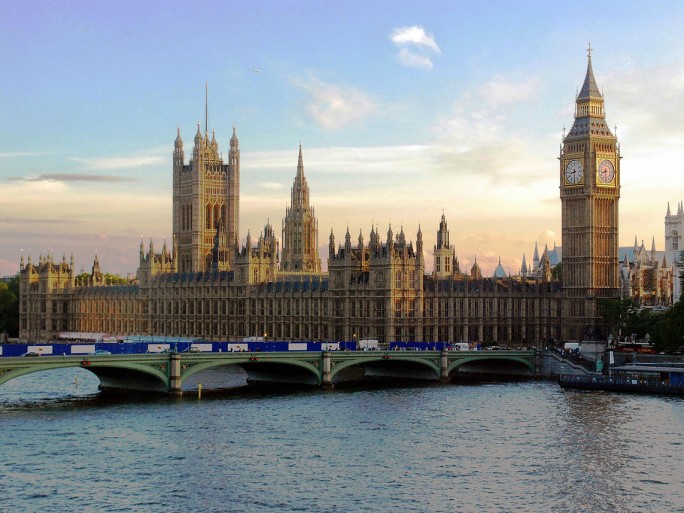The UK Parliament’s spending watchdog has warned that the Department for Digital, Culture, Media and Sport (DCMS) is not going to hit its downgraded targets for the increasingly critical rollout of superfast “gigabit” broadband.
The Public Accounts Committee (PAC) on Wednesday warned that the DCMS over-reliance on commercial providers (BT Openreach, Virgin Media etc) for equal national broadband coverage is perpetuating the UK’s “great digital divide” between urban and rural broadband users.
The PAC said that good internet connectivity is now crucial to more economic growth, and the UK’s position in the global marketplace – all of which is increasingly important during the ongoing Coronavirus pandemic.![]()
Broadband pledge
It should be remembered that the British government in December 2019 had pledged to roll out gigabit-speed broadband to every home in Britain by 2025.
Prime Minister Boris Johnson has been a vocal supporter of the need for the UK to accelerate the deployment of ultrafast fibre broadband across the UK, and had previously called for FTTP to be made available to “every home in the land” within five years.
Prior to that, the government had originally set a goal of 2033 for the rollout of fibre to all premises – a target the Prime Minister had previously called “laughably unambitious” – before the government set the 2025 deadline.
Openreach was onboard, and in July 2020 it detailed its plans to roll out next generation fibre connections capable of 1Gbps in the hardest to reach areas in the United Kingdom.
Commercial telecoms FTTP (fibre to the premise) is expected to reach 70 percent of UK homes without the need for the government’s help.
But the financial ravages of the Covid-19 pandemic began to made itself felt on the public purse.
This led to Chancellor Rishi Sunak delivering a little bit of bad news in November 2020 for the deployment of ultra-fast full fibre broadband in the UK.
![]()
He revealed that the 2025 deadline for every UK home had been scaled back, with the aim now to have a “minimum of 85 percent coverage” by that date.
That said, the £5 billion budget remained intact.
Build like fury
Then in March 2021, the government announced the first stage of its £5 billion plan to get ultra-fast broadband, or fibre to the premise (FTTP), to remote British homes and locations.
The government announcement came soon after Ofcom had set out its regulatory plan on the pricing and other conditions needed for the former UK incumbent BT to commit £12 billion for the FTTP rollout.
BT then confirmed it will “get on and build like fury” to deliver fibre to the premise (FTTP) to 20 million homes or businesses by the mid- to late-2020s.
But concerns still persist.
For example in 2019 the Environment, Food and Rural Affairs Committee (EFRA) warned the government is not doing enough to tackle the digital divide between rural and urban areas.
And in October 2020 British communications regulator Ofcom confirmed it had begun an investigation of BT and its charges to install or upgrade rural broadband connections.
PAC warning
Into this comes the warning from the Public Accounts Committee, which said it is not convinced the Department for Digital, Culture, Media and Sport (DCMS) will meet even its downgraded targets for the increasingly critical rollout of “gigabit” broadband, and is relying too heavily on commercial contractors for the progress that has been made.
It said the DCMS reports that the proportion of premises in the United Kingdom with access to gigabit broadband leapt from 40 to 57 percent between May and October 2021 but this is largely due to Virgin Media O2 upgrading its cable network.
The PAC said said the DCMS “has made little tangible progress in delivering internet connectivity beyond that achieved by the private sector”.
DCMS’ goal of full coverage by 2030 “does not cover the very hardest to reach areas, which include around 134,000 premises” and it has no detailed plan in place for reaching communities where it is not commercially viable to do so.
Private sector reliance
The PAC said it had already warned last year that “failures with the rollout of superfast broadband across the UK risked exacerbating digital and economic inequality”.
And while “commercial investment plans by existing and new providers are welcome, reducing the potential need for taxpayer funded rollout”, the Committee said it remains concerned that DCMS’ focus on “accelerating coverage through rollout by commercial operators rather than by prioritising those areas it knows are hardest to reach risks some of the areas that need improved connectivity most being once again left behind”.
“DCMS’ planning and project management show all the signs of the previous rollout – that the focus will continue to be on the easier to reach areas and there is still no clear plan for the hardest to reach communities,” noted Dame Meg Hillier MP, Chair of the Public Accounts Committee.
“It couldn’t really explain how broadband has got as far as it has in this critical national strategy, beyond “thanks to Virgin Media”, and incredibly it still doesn’t have a real plan for getting the rest of the way to its own downgraded targets,” said Hillier.
“What DCMS does know full well is it can’t rely on the private sector to get fast broadband to the hardest to reach, excluded and rural areas, and despite its repeated promises to do exactly that we are apparently little nearer to closing “the great digital divide” developing across the UK nor addressing the social and economic inequality it brings with it,” Hillier concluded.





